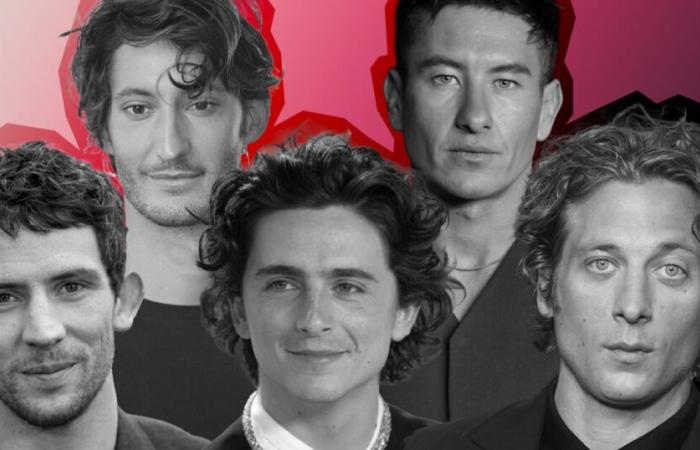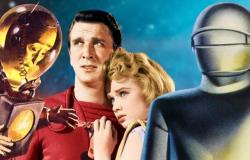What do Timothée Chalamet, Pierre Niney, Josh O’Connor or Jeremy Allen White have in common? They are actors, known, young, talented and captivate the hearts of their fans. But above all, they are what the Anglo-Saxon press and social networks now call rodent men, or “rodent men”, a new ideal of masculine beauty. Decryption…
Where does this phenomenon come from?
It all starts in May 2024, when the magazine’s journalist Dazed Serena Smith coined the classification “rodent men” to refer to actors who, she says, “are generally more slender than muscular, with more pinched and angular features.” She clarifies: “Often they are not conventionally beautiful, but that makes them even sexier.” And to illustrate her point, she then compares Josh O’Connor and Mike Faist, the two male stars of the film Challengersto Roddy St James (the rat of Mouse City) and Stuart Little (the mouse from the saga of the same name).
Then, after having assured that being “handsome as a rodent is not an insult but a compliment”, she notes that Kieran Culkin (Succession), Tom Hiddleston (Loki), Jeremy Allen White (The Bear), Logan Lerman (The perks of Being a Wallflower), Tom Holland et Tobey Maguire (Spiderman) or even Timothée Chalamet and Adam Driver (who needs no introduction…) – to which we add the Irishman Barry Keoghan (revelation of Saltburn) or Pierre Niney – they also belong to the large Rodentian family.
In itself, nothing terrible, the story could have ended there. Except that TikTok got involved, making this name viral and worldwide. So much so that after a few weeks, the concept became a phenomenon that ignited the networks.
On the one hand, the main interested parties, flattered or amused to be associated with mice, rats, capybaras, hamsters – the list goes on and the cutest ones. But also the animal rights association PETA, which is delighted with the buzz by publishing an enthusiastic: “Thank you for showing that rodents are wonderful animals!” Or the groupies of all the stars labeled “rodent”, even “hot rodent”, who add to it with memes and laudatory comments.
On the other hand, Internet users who find this animal analogy making their hair stand on end. Obviously not sensitive to the “Ratatouille effect” – named after the film which made rats eminently sympathetic and made us forget the heaps of false ideas received about these small mammals as intelligent as they are endearing – they rebel against this “ nice way of saying that someone is ugly”, deeming it insulting and degrading.
Even racist, “since most celebrities compared to rodents are White” and anti-Semitic, as evidenced by messages posted on saying that Josh O’Connor and Timothée Chalamet are “gnaw men” even though they are both Jewish and that describing Jews as rats is a known anti-Semitic slur. I understand that’s not what many of you meant, but it’s a slippery slope.”
And at the center, media reputed to be serious like the New York Times or the Guardianwhich analyze this “trend” – at the same time serving as a new echo chamber.
Why are “rodents” so successful today?
Over the years, the standards of male beauty have evolved. Like a reflection of the values and concerns “of the moment”, each era reinterprets what it means to be beautiful. In this case, after a long journey through the desert in terms of “sex appeal” – as Dustin Hoffmann, Adrien Brody or Alfredo Linguini (the human hero of Ratatouille) can attest! –, the rodent man, or whatever he is called, has for some time now skyrocketed on the “sexyness” scale because he “sticks” to the times. That’s to say? According to Gina Cherelus, reporter at New York Timesthis attractiveness is due to the fact “that these people are not classic macho male stereotypes, this can allow women to feel safe”.
An opinion shared by sociologist Daniel Welzer-Lang, specialist in masculinities and author of the essay Autobiography of a gender sociologist guy (Erès, 2022). In The Worldhe explained: “Many women who have been in contact with violence are reassured by men who do not send signals of dominant masculinity. Fifty years ago, the emblem of virility was Alain Delon, the “Cheetah”. Today, this predatory image is seriously undermined.”
He added: “It’s a fairly logical phenomenon. The relationship with masculinity evolves at the same time as progress for the rights of women and LGBTQIA+. Progressive women and men are increasingly turning to people far from traditional patterns. The rodent man is rather slender, with a discreet and intellectual side. He doesn’t go to gyms and doesn’t put his virility forward.”
But that’s not all! The constantly rising rating of “rodents” also owes a lot to… a fed up with images of overexposed idealized bodies on the internet as well as a form of rejection of artificial intelligence, as summarized by Gina Cherelus and her colleague Stella Bugbee: “If we are offered a false perfection, we will aspire to human imperfections. We want to know that the people we find sexy have blood in their veins and are the product of two humans combining their genes. We want to see the vulnerability of an asymmetrical face!”
Will this craze last? Very smart who can predict with certainty what the next sociotype in vogue on the networks will be. But knowing that wildlife is as rich in species as our imagination is in potential delusions, we don’t worry: it will come!
Did you like this content? Subscribe to our newsletter to receive all our new articles!






